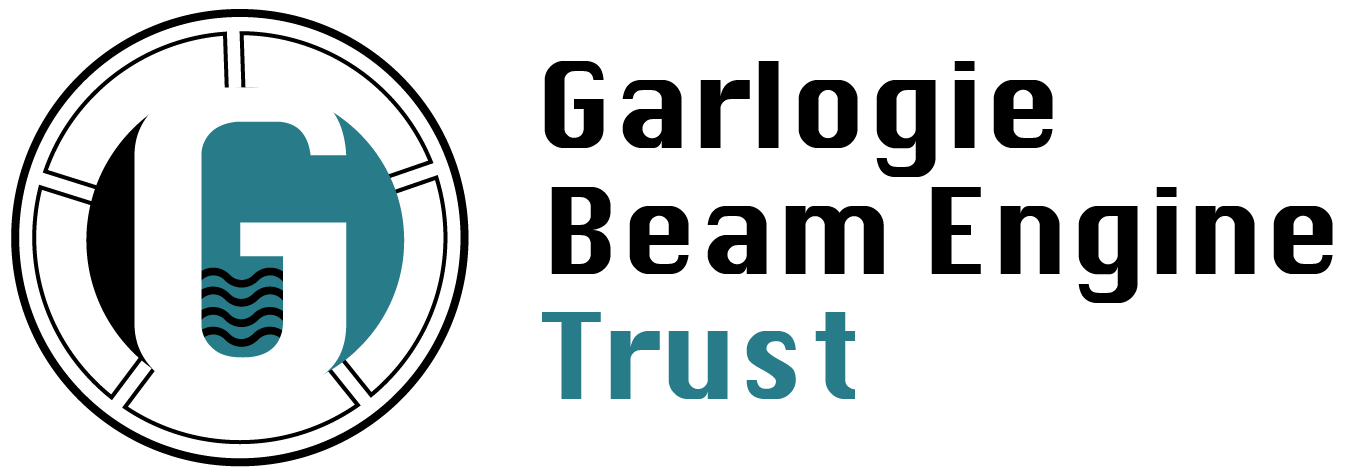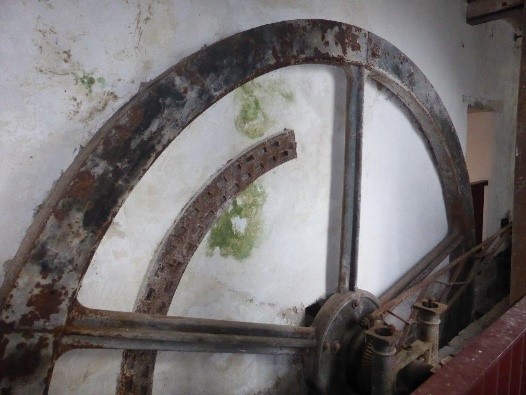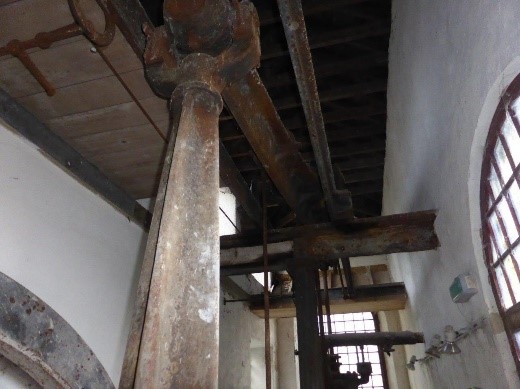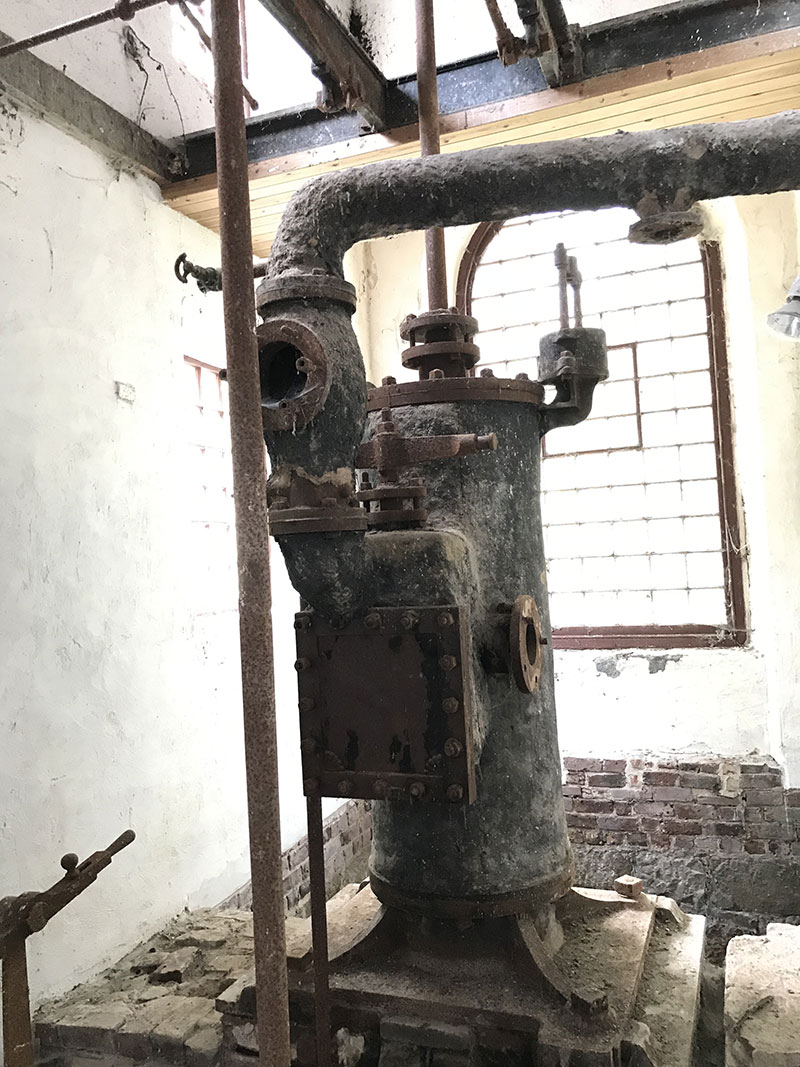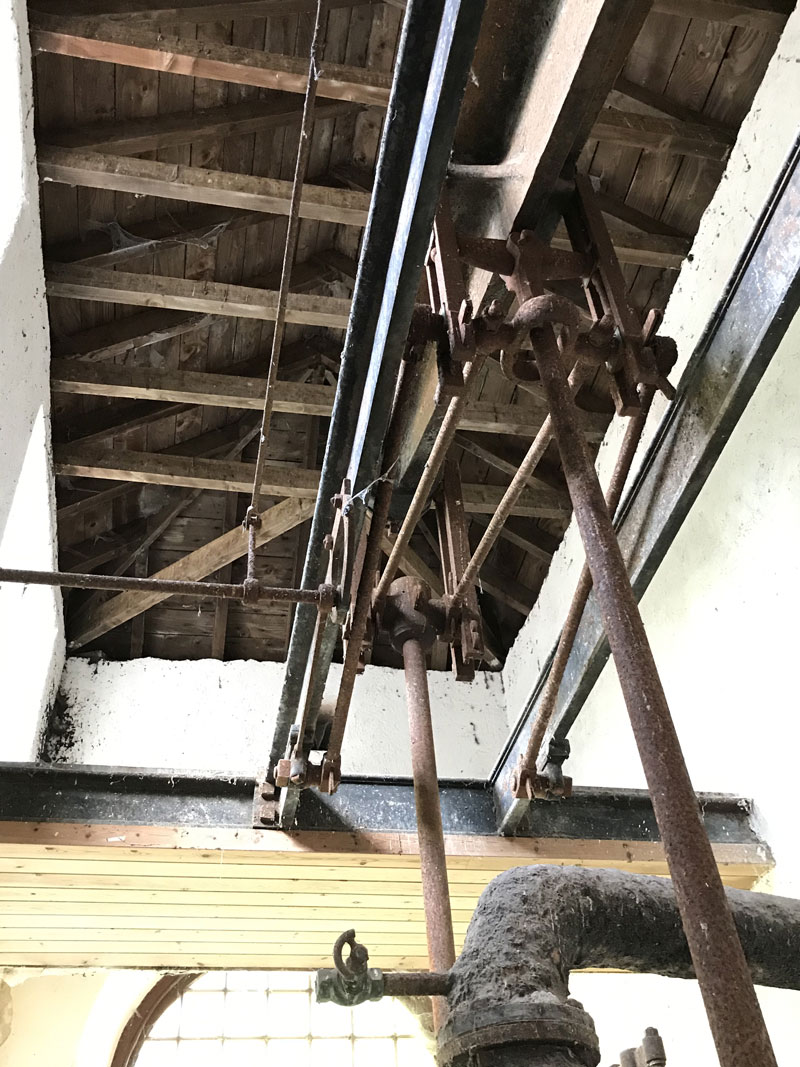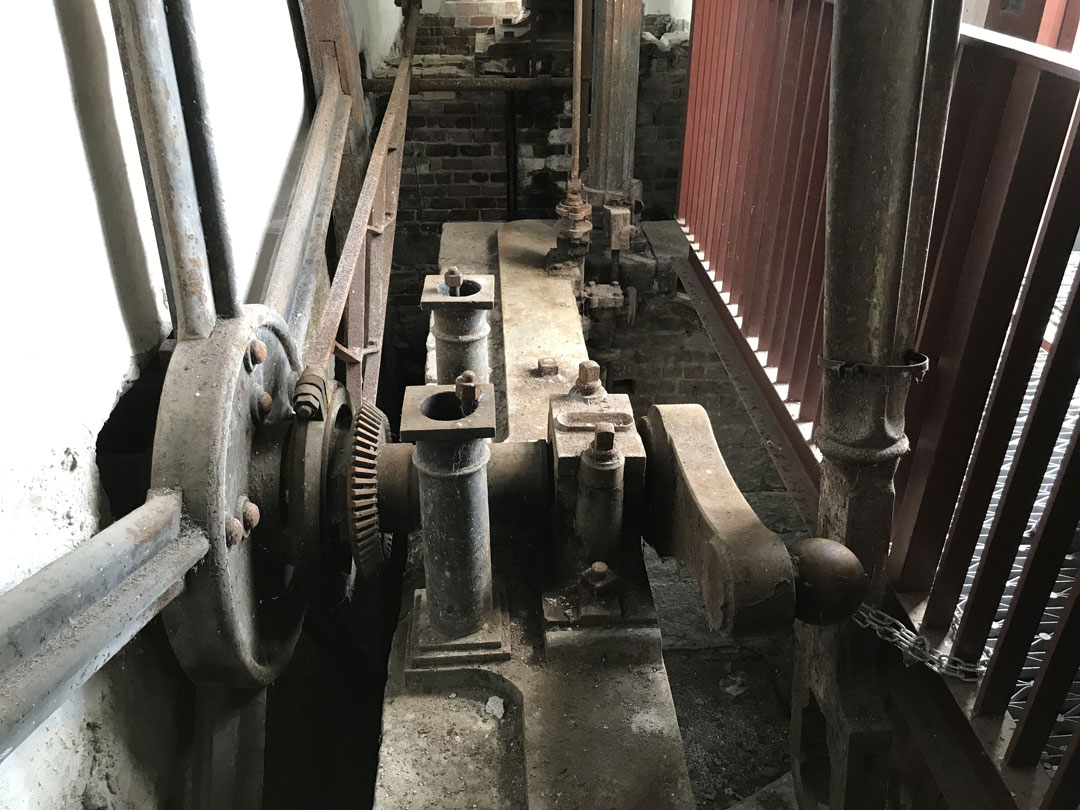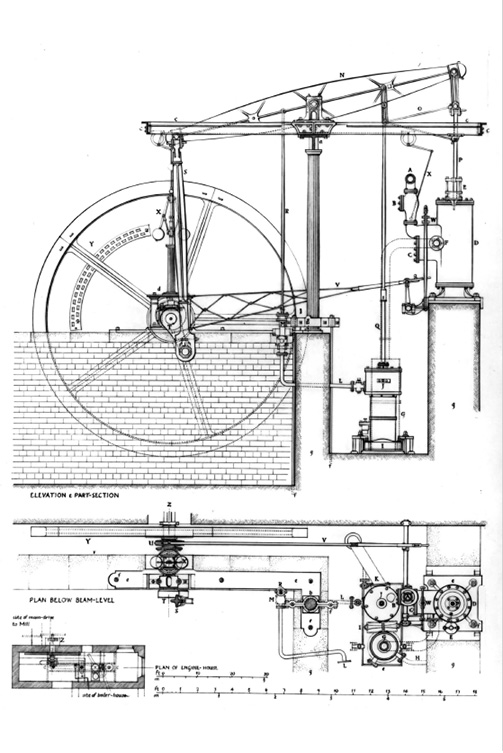Beam Engine
The engine mostly dates from the late 1830s although the engine beam is from a Boulton and Watt engine that was supplied to Alexander Hadden and Sons for their factory at The Green in Aberdeen in 1805. We believe this makes it the oldest cast iron engine beam still in existence. The engine is the oldest steam engine of any kind still in its original location in Scotland. The engine house has been designated a Category A listed building by Historic Environment Scotland.
The beam engine consists of a double acting piston and cylinder arrangement connected to the beam by a parallel linkage. The cylinder bore size is 18” and is currently obscured by lagging. The 16ft 4in long beam has a swivel joint for the connecting rod that drives the crank and 16 ft diameter cast iron flywheel which has a barring plate set into the wall. The swivel joint removes the need for exact alignment between the beam and the crankshaft assembly.
The steam is controlled using a slide vale assembly on the side of the cylinder which is connected to a single eccentric on the crankshaft via a lattice rod. As the engine was driving wool spinning machinery there was no requirement to reverse the engine.
The engine appears not to have been modified since it was installed although records indicate that a new cylinder was installed in 1870. All major parts of the engine are still in place and in reasonable condition (linkages, condenser, air pump, feed pump etc) although some bearings are missing. Valves, non-ferrous parts etc are absent as is the boiler and steam supply pipework which were removed in the early 1920s.
The exact age and manufacturer of the engine is a matter of speculation as nothing has been stamped or cast onto the engine itself. However extensive research in the Birmingham Library Boulton and Watt archives and examination of the 1833 and 1838 Factory Act returns have shown that the engine beam and possibly some associated components originate from a Boulton and Watt engine supplied in 1805 to Alexander Hadden and Co for their factory at the The Green, Aberdeen. This engine was apparently cannibalised for a new engine at Garlogie in 1833 when Alexander Hadden bought Garlogie Mill. The previous theory that parts of the engine could have been manufactured by Mitchell and Neilson of Glasgow is now regarded as unlikely due to a mismatch in timings, so the manufacturer of the flywheel, governor, original piston and cylinder assembly, condenser, air pump, and other ancillaries still remains a mystery.
The Garlogie engine is a late example of what might be termed the early phase of rotative steam engine design. Early engines were all built with the cylinder vertical as it was thought this prevented excessive cylinder wear by the piston (although steam locomotive experience at this time was beginning to prove this theory wrong). The beam engine arrangement facilitated the most compact engine layout given this constraint. Early beam engines used the walls of the engine house to support the beam, later engines used a separate entablature (set of supporting columns) to support the beam, making the engine structurally separate from its building. Garlogie represents a halfway house in this respect, with both a supporting cast iron column under the beam pivot and substantial iron girders built into the walls of the engine house.
The engine consists of a single cylinder which is wasteful as it meant exhausting the steam after each stroke rather than using it again in a second or even a third lower pressure cylinder, as was the case for most large engines from the 1840s onwards. Concerning the valve gear, the design is inefficient as steam cut off happens quite late in the piston travel, meaning the possibility of expansive working by the steam is reduced and more steam is consumed than necessary for each stroke of the piston. The above design points and others make the Garlogie engine an interesting and important case study in the story of steam engine development.
A note found in Alexander Hadden and Sons records dating from 1904, when the future of the mill was being discussed, gives an insight into the economics of the beam engine operation. Experience indicated that it consumed 1¼ tons of coal per day. 1¼ tons of coal at Aberdeen was priced at 13 shillings, which rounded up to 16 shillings at Garlogie. Assuming 295 working days gave an annual cost of coal of £236. To that would be added fireman’s wages of £50 per year, giving £286 per year cost of year round operation of the beam engine. This gave a convenient figure for calculating the value of the water power supplied to the Mill, which was needed for delicate negotiations regarding the value of water rights to the mill.
